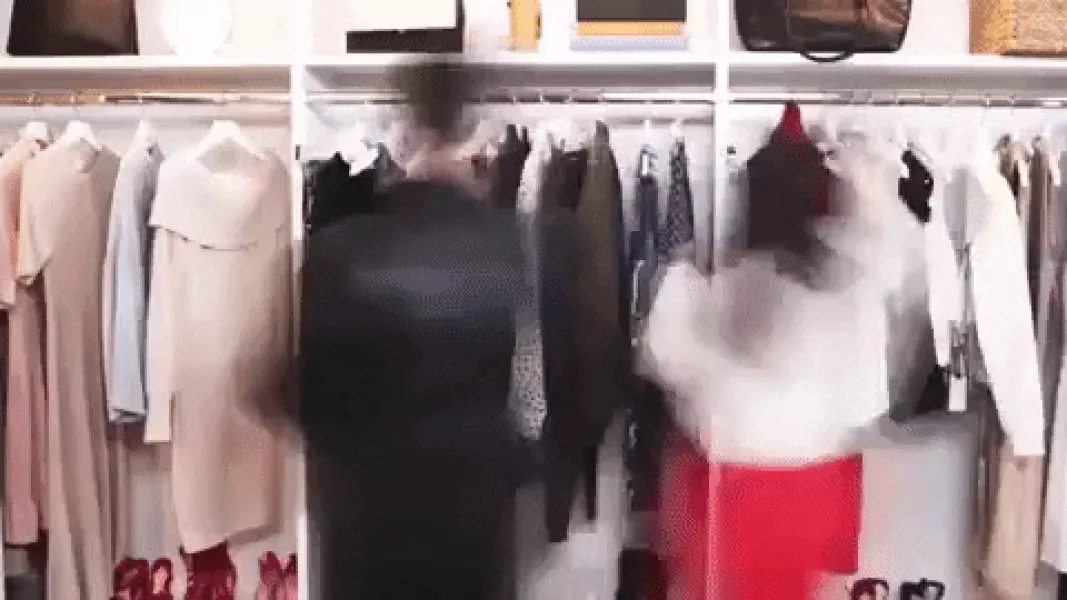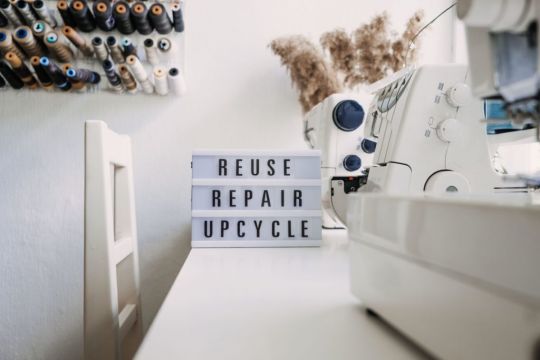New Year’s resolutions aren’t always the most positive of things – they traditionally centre around ideas of things like weight loss, and can often suggest you’re not already great just the way you are.
However, moving into a new year does bring with it an opportunity to reflect on your life – and perhaps think about positive changes you can make. Particularly in the aftermath of Cop26 in November 2021, many of us are thinking about how our day-to-day lives can become more sustainable.
The fashion industry is an area of concern for the environment. “We take materials, turn them into clothes and after a short period of time they get thrown away, and the impact is huge,” says Marilyn Martinez, project manager at the Ellen MacArthur Foundation’s fashion initiative.
Clothing production doubled between 2000 and 2015, whilst the amount of time we used clothes fell by more than a third. Find out how circular business models can help change this: https://t.co/ffqDtYZuOn#circulareconomy #makefashioncircular pic.twitter.com/sO8gkQcwUm
— Ellen MacArthur Foundation (@circulareconomy) November 29, 2021
Advertisement
“In 2018, the fashion industry accounted for 4 per cent of global greenhouse gas emissions. It’s too wasteful and polluting to run in the long-term.”
A 2017 report from the foundation found textile production emitted 1.2 billion tonnes of greenhouse gases a year, which is why it wants us to move into a circular economy – “where waste is eliminated, resources are circulated, and nature is regenerated”.
Martinez would like to see a huge overhaul of how the fashion and textile industry works and says: “Brands need to do more than just change a few materials or add a few new options to what they do; it’s about redesigning the whole system.”

These are Martinez’s key resolutions to help make your fashion choices more sustainable in 2022 – and hopefully contribute to positively changing the industry. Her top piece of advice for sticking to them in the long-term? “Think before you buy,” she advises. “Lots of services are available to extend the use of clothes.”
1. Use more of what you already own
“How can you increase the use of your clothes?” Martinez asks. “For example, better care, repair, customisation, tailoring.”
2. Opt for ‘used’ first
“For fashion to thrive in the future, it needs to move to a circular economy designed to eliminate waste, keep products in use, and regenerate nature,” suggests Martinez. She recommends thinking about new ways to shop that aren’t buying new – such as resale or rental options.
3. If you’re not wearing it any more, make sure it doesn’t go to landfill
“Think about reselling, swapping, renting, or sharing,” says Martinez. She cites new research from the Ellen MacArthur Foundation “that showed business models such as rental, resale, repair and remaking could be worth $700 billion (€617 billion) by 2030 and provide a third of the greenhouse gas reductions needed to put the fashion industry on a 1.5-degree pathway” (meaning global warming is limited to 1.5 degrees, an ambitious goal of the Paris Agreement).
How do you buy clothes better – and wear them longer? We teamed up with Levi’s® and three Depop creatives to show that with some creativity, it’s easy to celebrate fashion with an afterlife. Check out the customised vintage Levi’s® pieces on the app now: https://t.co/vd6mRn3YCZ pic.twitter.com/27jptDz73L
— Depop (@depop) November 12, 2021
4. Give brands feedback
“Tell brands how they could do better, give them feedback about design fails or ideas about how to improve your experience,” says Martinez. “More and more customers are calling for better choices when it comes to clothing and as a result, we are seeing huge levels of innovation and growth in circular economy business models.
“Our work shows that resale, rental, repair and remaking have the potential to grow from 3.5 per cent of the global fashion market today to 23 per cent by 2030. Much of that is driven by brands wanting to meet the demands of their customers.”
5. Spread the word of any new ways of accessing and enjoying fashion
Martinez adds: “The ultimate goal is to create a fashion industry where whatever choices we make about what to wear, we can have a positive impact.”








